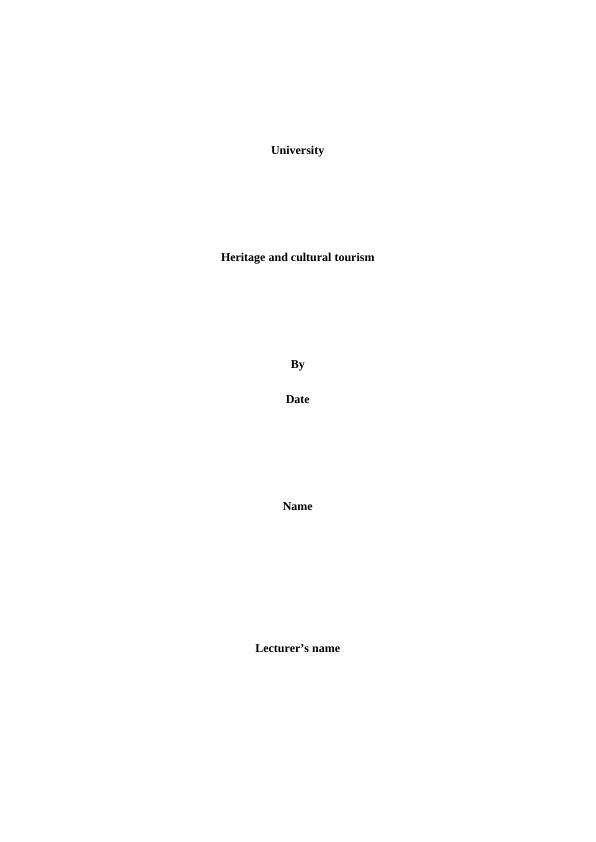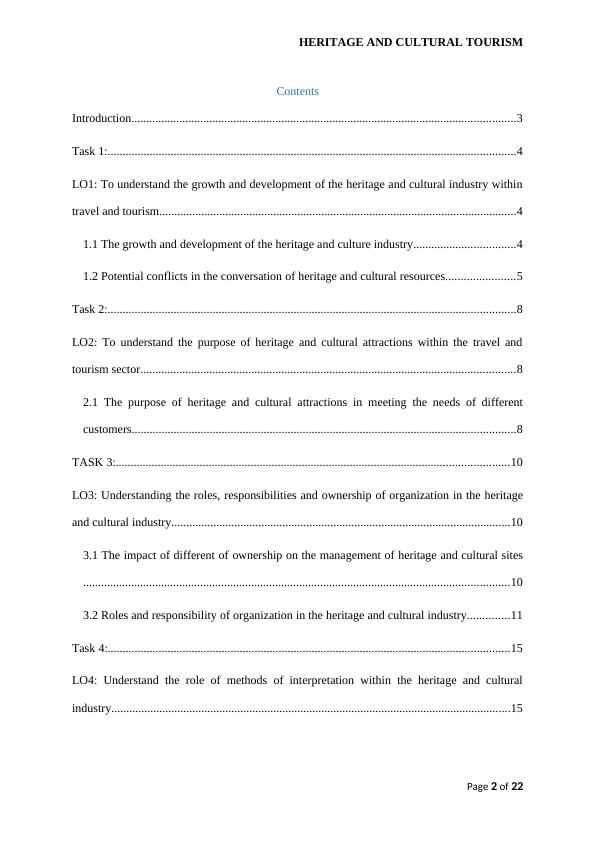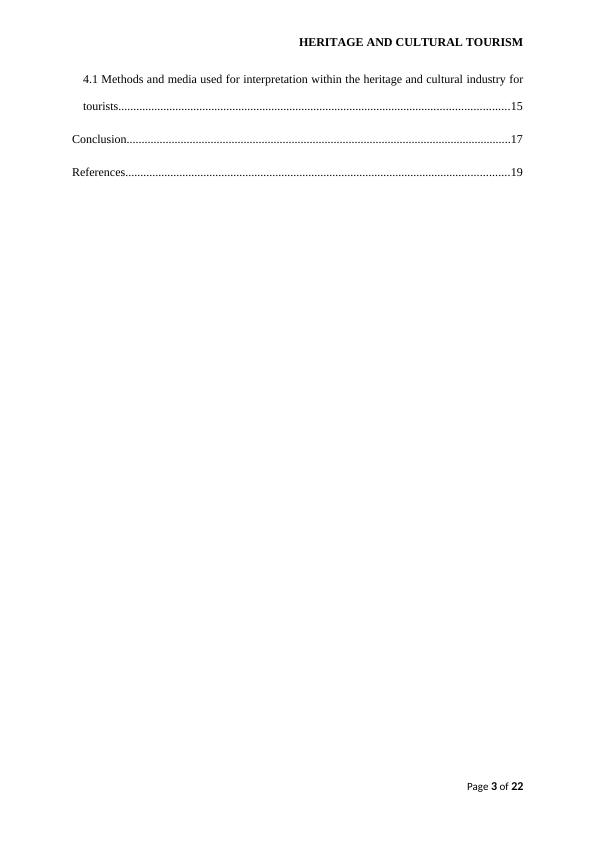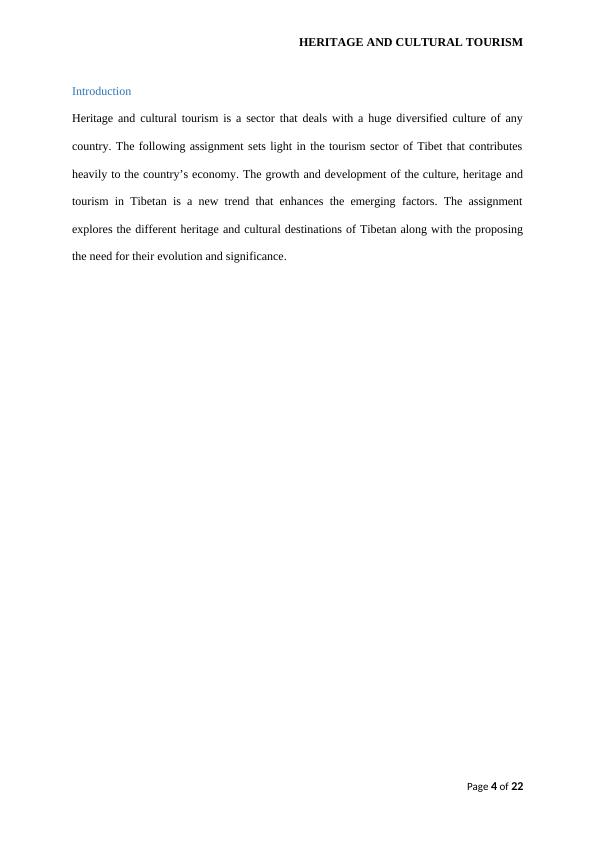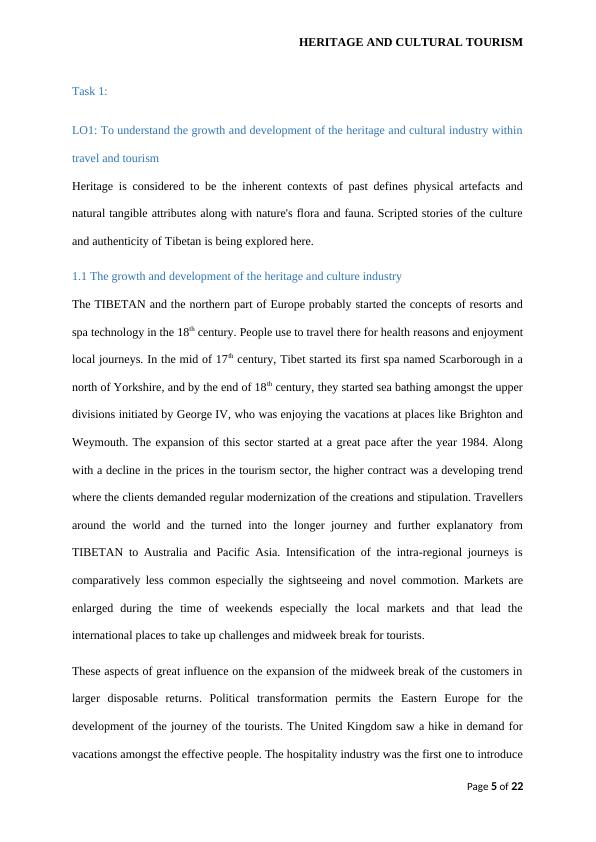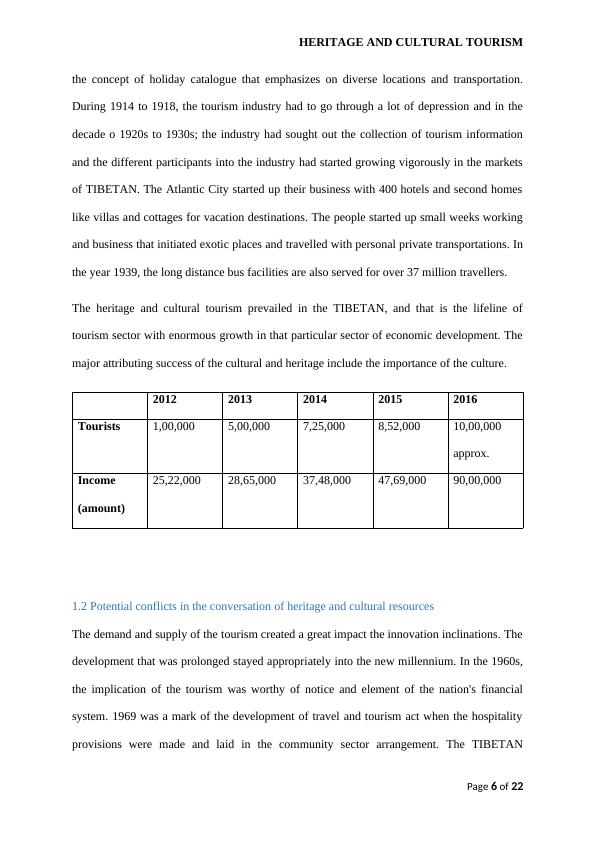Heritage and Cultural Tourism: Growth, Development, and Impact
22 Pages4504 Words186 Views
Added on 2023-04-10
About This Document
This assignment explores the growth and development of the heritage and cultural industry within travel and tourism, including potential conflicts in the conservation of heritage and cultural resources. It also discusses the purpose of heritage and cultural attractions in meeting the needs of different customers and the roles, responsibilities, and ownership of organizations in the industry. Additionally, it examines the impact of different ownership structures on the management of heritage and cultural sites.
Heritage and Cultural Tourism: Growth, Development, and Impact
Added on 2023-04-10
ShareRelated Documents
End of preview
Want to access all the pages? Upload your documents or become a member.
Assignment On Heritage And cultural Tourism Sector
|19
|5290
|72
Heritage and Cultural Tourism Management
|15
|3321
|247
Development of Heritage and Cultural Industry within Travel and Tourism : Report
|20
|5197
|37
Understanding the growth and development of the heritage and cultural tourism industry within travel and tourism
|14
|3674
|53
Assignment- Growth & Development In Heritage & Cultural Industry
|17
|4254
|135
Development of Heritage and Cultural Industry in Tourism Business : Report
|17
|6600
|178

